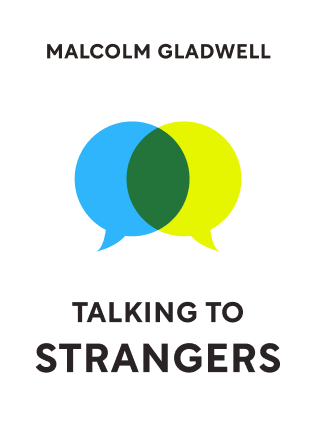

This article is an excerpt from the Shortform book guide to "Talking to Strangers" by Malcolm Gladwell. Shortform has the world's best summaries and analyses of books you should be reading.
Like this article? Sign up for a free trial here .
What are some of the most egregious criminal justice system problems? Are the issues in the criminal justice system solvable? How?
We’ll cover a few of the criminal justice problems that arise when judges have to make decisions solely on their gut feelings about a person. As we’ll see, some criminal justice system problems could be solved if we let a computer make more of our court decisions.
Criminal Justice System Problems
On a typical Thursday in Brooklyn, Judge Solomon was presiding over his courtroom. His primary responsibility for the day was arraignments. He had to see every defendant who had been arrested in the last 24 hours, look at their criminal history, listen to the testimony of both the prosecution and the defense, and then decide if the defendant would be offered bail and the chance to be released from custody. In short, Judge Solomon had to look a perfect stranger in the eye, assess his character, and decide if he deserved his freedom. But does looking a person in the eye actually help you judge his nature? If not, this is a critical issue in the criminal justice system.
A team from the University of Chicago, led by Sendhil Mullainathan, set out to answer that question. The experiment went like this:
- Mullainathan gathered the data of all 554,689 defendants that went through the NYC courts from 2008-2013. They found that 400,000 of those defendants had been released by the judges that presided over their arraignments.
- Mullainathan built a computer with an artificial intelligence system.
- The computer was fed the data of the same 554,689 cases. It then made its own list of the 400,000 defendants least likely to commit a crime while out on bail.
The Results: Can a Computer Solve This Criminal Justice System Problem?
- The defendants chosen by the computer were 25% less likely to commit a crime while waiting for trial than the defendants released by human judges.
- The computer flagged 1% of the defendants as “high risk,” not suited to be released. The human judges presiding over those cases released nearly half of that 1% high-risk subgroup.
- The defendants selected by the human judges as “high risk” were not consistent with the computer—in fact, they were from all different groups of risk likelihood, as predicted by the computer.
Translating the Results
The computer was much better than human judges at determining a defendant’s likelihood of committing another crime. The study found that judges were not only setting their standards for release too low, but they were also actually mis-ranking many defendants completely. This is one of the biggest criminal justice system problems.
It is important to note that the human judges that presided over these cases had three resources available to them when making their bail decision:
- The defendant’s record
- The testimony of the attorneys
- The judge’s own personal observations of the defendant standing before him.
Mullainthain’s computer only had one of these three resources—the record of each defendant. Yet the machine still beat human judges when it came to making bail decisions. Why is it that meeting a defendant actually made the judge less likely to be able to gauge his trustworthiness? Should all bail systems be made by computers? Would this solve a key issue in the criminal justice system?
Assuming Transparency Can Be Dangerous
The bail hearings described are an exercise in transparency. Judges who look at their defendants make more mistakes in judging character than a computer that never sees the defendants at all. Watching someone’s facial expressions is not a fail-proof way to see how that person is feeling. Someone who is surprised might not show it, and someone who is dangerous might come across as stereotypically demure. This is one of the biggest criminal justice system problems.
Patrick Dale Walker
A man named Patrick Dale Walker was arrested in Texas for trying to kill his girlfriend. The only reason he didn’t succeed in murdering her was that the gun jammed when he pulled the trigger. The judge presiding over the case set bail at $1 million, and Walker went to prison. But four days later, the judge lowered the bail to $25,000 and Walker was released.
The judge reasoned that four days in jail would be enough for Walker to “cool off.” He saw Walker as a polite young man with a clean record. Most important, he saw that Walker was remorseful for what he had done. But could he really see something like remorse in a stranger? Apparently not. Walker shot his girlfriend to death four months later.
In this case, seeing Walker made the judge worse at interpreting his intentions. The information the judge thought he gleaned from observing Walker’s seemingly remorseful behavior was actually misinformation, because Walker was not transparent.
What Is the Solution to Issues in the Criminal Justice System?
It’s clear that looking at a stranger and assuming transparency has negative consequences. But what do we do with that information? Should judges have to sit behind a curtain when hearing their cases? That might make a certain part of the decision-making process easier, but it would also take away the humanity of the defendant. A judge needs to see the human whose freedom is on the line.
Transparency, just like truth default, is a flawed strategy for dealing with strangers. However, it is a necessary strategy. Humanity would suffer if every social interaction was mistrusting and anonymous because social coordination is a necessary part of the human experience. So, in an effort to keep our humanity, we make ourselves vulnerable to deception. That is the confusing paradox of dealing with strangers—we need to communicate, but we’re terrible at it. This is an enduring problem in our society, and in the criminal justice system.
How We Judge the Guilt of Others
Remember Tim Levine’s Trivia Experiment, in which participants were asked whether or not they cheated when Rachel left the room and then viewers were asked to determine which participants were lying about cheating on the test.
The experiment measures how accurate the viewer is at detecting the participant’s lie. In this experiment, Levine found that the viewer correctly detects a participant’s lie 54% of the time on average. That percentage is only slightly better than chance. Why is that?
One answer is Truth-Default Theory. But Levine felt as though there had to be another reason that people tend to mistake lies for the truth. In particular, Levine was perplexed by the pattern that most lies are not detected until after the fact. (For example, Scott Carmichael missed all the clues that Ana Montes was a Cuban spy in the moment. But later, Carmichael could recognize those red flags.) In an effort to explain this pattern, Levine returned to the tapes of his Trivia Experiment participants. This may shed light on how we judge others and some of the criminal justice system problems.
Participants: Sally and Nelly
Two of Levine’s participants were particularly interesting to study. We will call one Sally and one Nervous Nelly.
- When asked if she cheated, Sally took a lot of pauses, started to blush, avoided eye contact, and appeared confused. Every viewer who watched Sally’s interview accurately identified that Sally was lying.
- When asked if she cheated, Nervous Nelly gave rambling answers, obsessively played with her hair, became defensive, and acted agitated. Every viewer who watched Nervous Nelly’s interview suspected that Nelly was lying. But Nelly was telling the truth.
There were a lot of participants like Nelly and Sally, who got the same response from nearly every viewer. In fact, some participants were judged correctly by 80% of judges are more. And some participants were judged incorrectly by 80% of judges or more. Why?
Levine argues that this is an example of a judge using demeanor as a clue to someone’s honesty—an example of the assumption of transparency. These viewers were operating under the assumption that a liar in reality would behave like a liar on Friends.
A person will be judged as honest if she is:
- Well-spoken
- Confident
- Friendly/Engaging
- Has a firm handshake
A person will be judged as dishonest if she is:
- Nervous
- Fidgety
- Inarticulate
- Disengaged
The participants that were judged correctly 80% of the time were those whose internal state and external demeanor were matching. For example, Sally matched—she was being dishonest and she was acting dishonestly. The participants who were judged incorrectly were mismatched. For example, Nervous Nelly mismatched—she was being honest but her demeanor seemed stereotypically dishonest.
In other words, the average person is only bad at detecting lies when the sender is mismatched. Mismatching confuses the average person—it is at odds with the natural assumption of transparency. When a liar acts stereotypically honest or an honest person acts stereotypically dishonest, we don’t know how to make sense of it.
Law Enforcement Viewers
It makes sense that the average person might not be a professional when it comes to detecting lies. But what about law enforcement officials that are supposed to be professionals at detecting lies, such as interrogators? Wouldn’t they be better judges than the average adult? This could shed light on issues in the criminal justice system. To answer this question, Levine found interrogators with over 15 years of experience and asked them to watch the Trivia Experiment participant’s interviews.
The Results
- On matched participants (those who acted accordingly to their level of honesty), the interrogators were 100% accurate. The average adult would only be 70-75% accurate with the matched participants.
- On mismatched truth-tellers (Nervous Nellies who tell the truth in a way that seems dishonest), the law enforcement officials were only 20% accurate.
- On mismatched liars (liars who act honest), the law enforcement officials were only 14% accurate.
Law enforcement officials are just as bad or even worse at interpreting strangers with mismatched behavior than the average adult. This is distressing because these are the people charged with determining a stranger’s innocence or guilt. This is a major criminal justice system problem.
You have to wonder if this is part of the reason there are so many cases of wrongful convictions (like Amanda Knox) and unsuccessful bail decisions (like Patrick Walker). Mistakes like these might seem random, but Levine’s research proves that they aren’t random at all. These mistakes are a result of the systematic discrimination against people who, often unknowingly, don’t conform to our ridiculous assumption of transparency.

———End of Preview———
Like what you just read? Read the rest of the world's best book summary and analysis of Malcolm Gladwell's "Talking to Strangers" at Shortform .
Here's what you'll find in our full Talking to Strangers summary :
- Why we don't understand strangers
- How to talk to strangers in a cautious way so you don't get fooled
- How Hitler deceived so many world leaders






